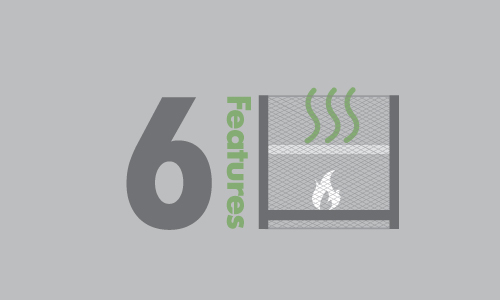Industrial ovens, also called dryers, are used for an array of different purposes. Besides being used for baking food, these pieces of complex machinery can also be utilized to dry out paint or prepare specific coatings. Regardless of the manufacturing process you will be sending through your oven, there is a set of characteristics that can help improve the overall performance and allow you to be more productive.
In this article, we will discuss the different ways you can use industrial ovens and highlight six characteristics you should always aim for when purchasing a new unit. Note that most industrial ovens are custom designed, so you can ask manufacturers to include certain features that will make the dryer ideal for your facility.
What Are Industrial Ovens Used For?
The basic function of an industrial-grade oven is to reduce moisture levels in large bulks of material. This allows companies to dry paint, prepare baked good, and apply certain types of coating that require high temperatures, among other uses. There are hundreds of models to choose from, and they all have specific features and variations that are suitable for their application.
You first have to look at the materials you will be using in your dryer. This will help you decide between all the different types, which can vary between rotary, rolling bed, conduction, convection, pharmaceutical, dispersion, and fluidized models, just to name a few.
In addition to the materials you use, you should also consider the type of process, your particular manufacturing facility, and of course, the features you need your oven to have.
6 Features Your Industrial Oven Needs to Have
Industrial-grade ovens vary in size, shape, and even fuel source based on the usage they are given. That being said, there’s a set of specific characteristics that can benefit most, if not all, facilities that implement dryers or ovens.
On-Site Installation, Startup, and Training
Although outsourcing the production of your industrial oven is standard procedure, you should not completely rely on the seller. Having your manufacturer install and set up your oven or dryer without training one of your team members means you may have to outsource maintenance jobs and repairs, regardless of how simple they may be.
Instead, you can have your manufacturer train one or more of your team members on how to properly start-up and operate the oven. This will help them identify any latent problems, and they may even learn how to carry out basic maintenance jobs that you can keep in-house.
Data Collection Mechanism
There are several elements that affect the temperature inside of your oven. Some ovens come equipped with mechanisms that record the temperature inside them at all times, allowing you to study certain patterns that may help you make adjustments and improve productivity.
Once you collect a certain amount of data, you can analyze it and identify periods when your dryer’s efficiency is lower than normal. You can work on normalizing these periods by making different changes to your process.
Digital Temperature Control
While many engineers prefer gauges, having digital control pads and displays simplifies the process for your entire staff. By making sure your pieces of equipment have digital displays, you will allow them to easily maintain the accuracy of their inputs and readings as well (source).
Static Connection Ports
The best dryers and ovens come equipped with static connection ports that can be used for multiple purposes. They are often implemented to rout current and potentially future test wires and probes to other pieces of equipment without the need for removing or modifying structural and cosmetic components.
Motorized Supply and Exhaust Fans
Like all pieces of heavy machinery, ovens and dryer need to have quality supply and exhaust fans to maintain optimal performance. These can work to help cool, heat or exhaust the oven and even serve as a piece of an independent energy recovery system.
The Right Heat Source
The manufacturing process sent to your oven will also dictate the heat source you will use. The most common sources are gas, electric, and indirect heating mechanism, all of which have their own set of benefits. Make sure you do your research and find a reliable provider that can answer all your questions.
Whether You’re New to Buying an Oven or Looking to See What’s Changed, Our New Guide Has the Answers
Whether this is your first oven or dryer purchase, or you haven’t needed to buy for a few decades, it pays to know what options you have available in 2018. From new technologies to new regulations and specifications, having a plan can help you avoid challenges throughout the process.
To help manufacturers understand their options and path to purchase, The CMM Group has released a new guide to help you chart a course from recognition to operation. This new guide, Five Steps to Selecting an Industrial Oven or Dryer for Your Manufacturing Facility is available for download by clicking here. Looking for a sneak peek? Preview it via SlideShare below:
Finding the Ideal Manufacturer
If you are looking to get a custom oven or dryer designed and built, our engineers will be more than happy to assist you. Get in touch with us by giving us a call or filling out our online contact form today!
Additional Industrial Oven Resources
A Beginner’s Guide to Airflow Management for Industrial Dryers and Ovens
Custom Industrial Oven Case Study
10 Things You Need to Know When Evaluating Food Processing Equipment Manufacturers




